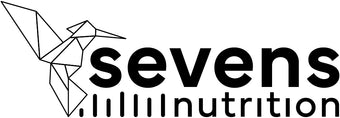Astaxanthin, a naturally occurring fat-soluble carotenoid, has demonstrated potent anti-inflammatory effects in numerous in vivo and in vitro studies. Its ability to alleviate chronic and acute inflammation in various diseases positions it as a promising therapeutic agent.
How Astaxanthin Works Against Inflammation
Astaxanthin exerts its anti-inflammatory action by targeting multiple inflammatory biomarkers and signaling pathways, highlighting the following mechanisms:
1. Modulation of Acute Phase Proteins (APPs) and Inducible Enzymes
- APPs such as C-reactive protein (CRP): Key biomarkers of inflammation. Astaxanthin regulates their production, contributing to tissue repair and restoring homeostasis.
- Inducible enzymes (iNOS and COX-2): Implicated in inflammatory diseases, these enzymes produce inflammatory mediators. Astaxanthin inhibits their activation and protein degradation, reducing inflammation.
2. Regulation of Chemokines and Cytokines
- Chemokines such as MCP-1: Responsible for recruiting macrophages that exacerbate inflammation. Astaxanthin suppresses its expression, decreasing macrophage infiltration and inflammation.
- Cytokines (IL-6, TNF-α, IFN-γ): Key mediators in inflammatory processes. Astaxanthin modulates their production, promoting immune balance and reducing inflammation.
3. Modulation of Cell Signaling Pathways
- NF-κB pathway: Central regulator of inflammation. Astaxanthin blocks this pathway, suppressing the expression of downstream inflammatory mediators.
- MAPK pathway: Involved in cellular responses to stress and inflammation. Astaxanthin modulates components such as ERK1/2, JNK, and p38 MAPK, reducing inflammatory activity.
- Nrf2 pathway: Key to antioxidant defense. Astaxanthin stimulates Nrf2 expression, enhancing cellular antioxidant response and mitigating inflammation.
- PI3K/AKT pathway: Related to cell survival and inflammation. Astaxanthin promotes this pathway, contributing to its anti-inflammatory effects.
- JAK-2/STAT-3 pathway: Involved in cytokine signaling and the progression of inflammatory diseases. Astaxanthin inhibits this pathway, reducing inflammation and its harmful effects.
A Broad Therapeutic Potential
Astaxanthin's ability to act on various inflammatory mediators and signaling pathways underscores its potential as a natural treatment for a wide range of inflammation-related diseases, including:
- Autoimmune diseases.
- Metabolic disorders such as obesity and diabetes.
- Cardiovascular conditions.
- Chronic inflammatory diseases such as rheumatoid arthritis.
Conclusion
Astaxanthin is a promising natural anti-inflammatory, capable of modulating key biomarkers and signaling pathways related to inflammation. Its holistic action not only mitigates inflammatory processes but also promotes immune balance and protects cells from oxidative stress.
At Sevens , we recognize the extraordinary potential of astaxanthin, which is why we've created our supplement with a specific formulation that increases bioavailability and is easy to consume. Discover how this powerful carotenoid can improve your quality of life and help you keep inflammation under control effectively and naturally.





